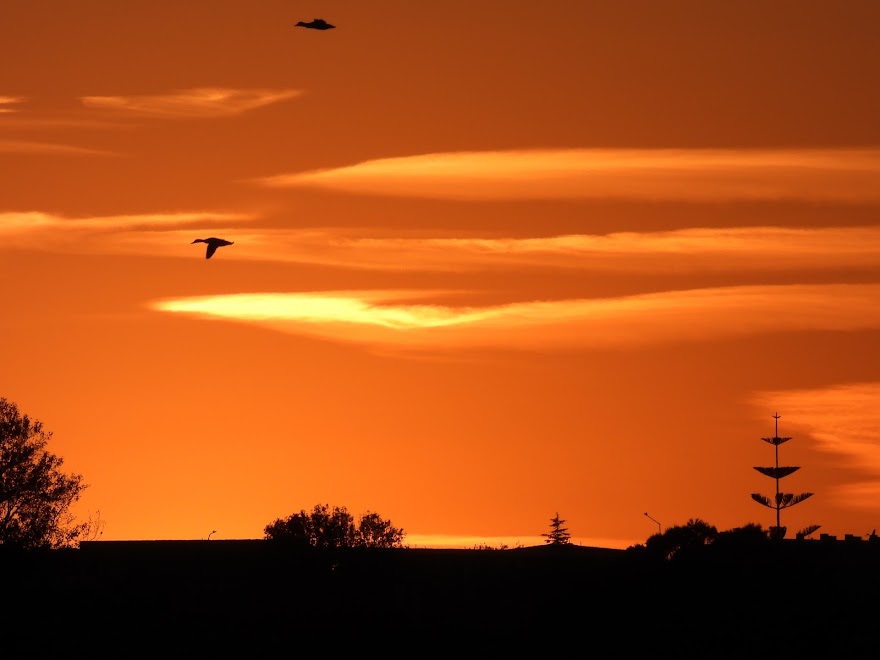It's getting to be that time of year here when foraging is easiest and most productive.
Today we are going to start by collecting some chestnuts. This tree is on public property and there are many people who pick up the nuts. Fortunately for all of us, the tree drops just so many at a time so there are always at least a few waiting for whoever walks by and doesn't mind bending over. I got three really nice ones today. All together, I have harvested 24 nuts.
Before you look at the pictures, let me tell you a little story about the first time I noticed these nuts.
I was walking home from grocery shopping and noticed these spiny things lying all over the corner. My first inclination was to pick one up but I discovered that they are extremely sharp and picking them up bare handed was a bad idea, unless you were extremely careful. I found a few bare nuts and pocketed them.
I then walked a few more paces and saw an old guy (older than myself) sweeping his home's section of sidewalk clear of the nuts. I said hi and asked him what they were. "Horse chestnuts," he said. He then explained that the tree, while not actually on his property, dropped about half it's yearly crop on his side of the fence. He said that those nuts that fell beyond his property were fair game for anyone passing by, but those that fell on the land he paid taxes on were his. I agreed that made sense.
He told me he had once been awakened at 6 a.m. and found a small group of people in his yard collecting the nuts. He went out and told them he was calling the cops if they didn't leave the nuts and leave his yard immediately. They did.
He asked me if I liked them and when I said I had never tried horse chestnuts before, he gave me a big double handful of them he had just picked.
When I got home, I looked them up and found that they were actually chestnuts, not horse chestnuts. A real find.
Here are the shots I took the other day.
These are scones made from the 'flour' of 20 chestnuts. Rather than pulverising the nutmeats by hand and drying them to a flour-like consistency, it is much easier to simply add the pieces to whatever milk the recipe calls for, and blending them for a bit. The result was mixed with white flour and it worked nicely.
I suppose that strictly speaking, buying peaches from a self-serve sidewalk cart is not really foraging, but it feels sort of like it. The lady who lives here on Sturges Road sells a variety of fruits as they ripen in her backyard and her prices are such that she's almost giving them away. We got 5 peaches per bag. For a buck. At today's rate of exchange, that's about 66 cents American. No wonder it feels like foraging.
 |
Here is our take from our walk on March 5th.
|
This next picture is of some of the results of foraging we have done in the past.
 |
From left to right we have:
Blackberry syrup made from berries discovered by Allie in a field next to the train platform at Sunnyvale.
Guava syrup from fruit we bought from the lady who also sells the peaches on Sturges Road.
Feijoa jam from the tree in our backyard.
Plum jelly from fruit given to Allie by her friend Kathy at ABI.
Here is an update on my acorn experiment. I can now report it to be a success.
These are halves that I boiled in three separate pans of water and then soaked for nearly a month, changing the water daily. The tannins are finally gone and no bitterness remains. I'm guessing that if you treated pecans the same way, you might end up with something similar.
I have another jar of finely chopped pieces of acorns that I have not boiled. I simply change the water daily. Although I have read that white oak acorns do not contain as high a level of tannins as red oak acorns do, it still takes quite a while, apparently, to leach out whatever level they do have. I tasted a piece today and it has quite a ways to go.
I cooked these in a little butter and oil and sprinkled cinnamon sugar on them as they sizzled. They're not as good as the nuts you can buy at the U.P. State Fair, but they are passable. I should have cooked the sugar longer so that it coated the acorns better. The main thing is, they are edible AND if this is all that you had, you'd find them very edible indeed.
These are scones that were made using the acorns pictured above. The black things in the scones are raisins. We blended these nuts just like the chestnuts. Jeanne made this dough a little moister so they have a more rounded, cookie-like appearance than the chestnut scones shown above. Both were delicious.
For reasons of it's own, the tree decided to drop a lot of acorns while they were still green. I have been experimenting with those. I notice now that the acorns left on the tree are starting to turn brown finally and I wonder if the tannin content of them might be different (less, I hope). I am going to pick the brown ones as they fall and taste the difference.
-to be continued... -djf
|



















































